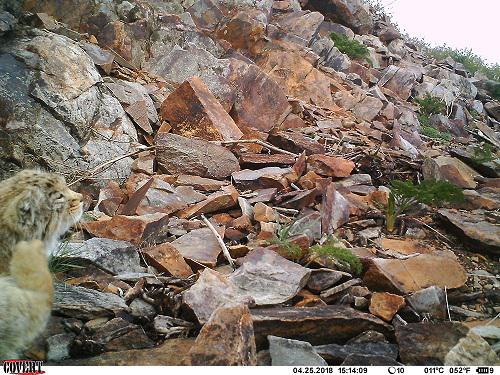Anna Barashkova
Other projects
The project is directed to obtain actual information about Pallas' Cat population number and distribution in Kazakhstan. The project also aims to estimate Pallas’ Cat population susceptibilities and to reveal possible threats to the species in Kazakhstan.

Pallas cat.
Pallas’ Cat is a small wild cat species listed as near threatened in IUCN Red List. There is no trustworthy data on modern Pallas' cat number and distribution in Kazakhstan though Kazakhstan includes the considerable part of global species’ range. Pallas' Cat is species recognized as rare and endangered but there is no accurate information about its modern status, probably it disappeared from much of the Caspian region (Nowell, Jackson, 1996; Red Data Book of Kazakhstan, 1996). The project is directed to obtain actual information about Pallas' Cat population number and distribution in Kazakhstan. For this we intend to carry out field surveys and interviews among local people.
As the investigated area is sparsely populated and the majority of its population are stock and sheep breeders we’ll conduct field trip in order to visit local people. We’ll question them on Pallas’ cat using standard questionnaire. Similar survey will be conducted among local students of Kazakhstan Universities (Ust-Kamenogorsk, Semey, Karaganda, and Almaty). The field work will be conducted in May-July while spreading of questionnaires we’ll begin when project starts (by e-mail and mail). Survey lists gathering and treatment will be started during the field work. We’ll obtain all possible data on Pallas’ cat (including reports about findings of animals and tracks, dens, etc., data on threats, attitude to species, any other data concerning species, etc.). Separately we’ll obtain data on Pallas’ cat’s competitors (other carnivores and birds of prey) to evaluate the role of Pallas’ cat in steppe ecosystems.
At the same time we’ll introduce local people into this rare species and the necessity to protect it. We’ll prepare educational materials (calendars and booklets) to distribute.
We’ll work together with local NGOs (Association for Conservation of Biodiversity of Kazakhstan, “Eco-Altai” and others). We’ll get at least 3 local students to take part in field work in order to train them in such kind of the investigation.
Final data treatment will be done using special GIS methods. The data base on Pallas’ cat in Kazakhstan will be created. The results will be disseminated among interested peoples and organizations through SibEcoCenter based periodical Steppe Bulletin and special site “Save Manul!”.